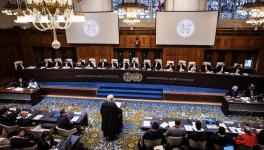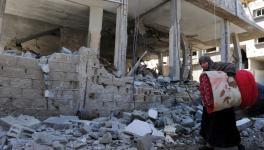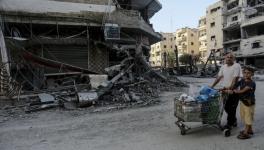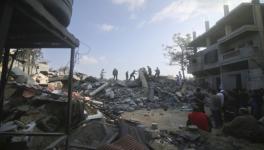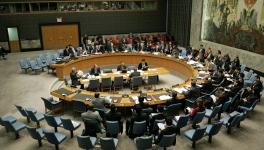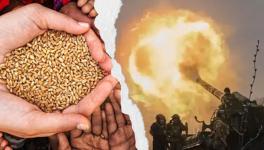Israel’s war Crimes
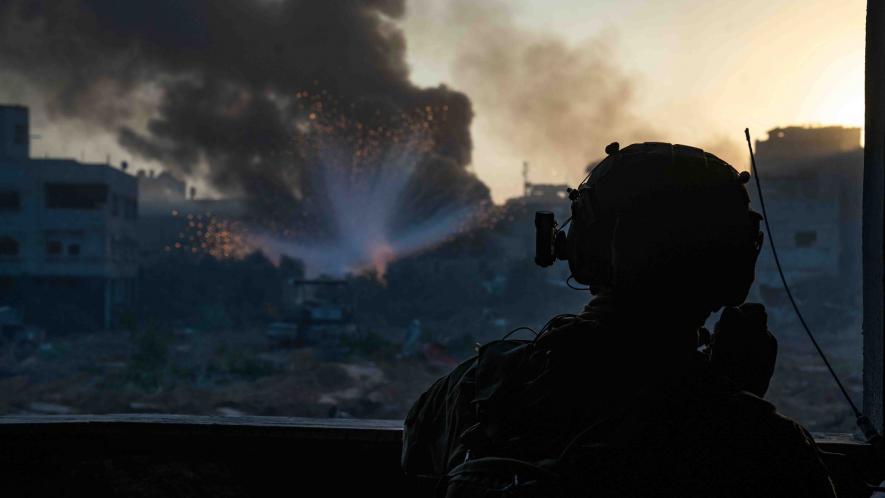
Image via IDF/X
On the night of December 19, 2023, Israeli military forces surrounded the Al-Awda building in Gaza City’s Al-Remal neighbourhood. Four families were inside the building, including the Annan family, after whom the building is popularly known as the ‘Annan Building’. The Al-Remal area, along the Gaza coastline, was a middle-class area of apartment buildings. During the early days of the war, the Israelis cruelly bombed this residential area, turning this residential quarter into rubble. Some buildings—such as the Annan Building—remained intact and had become shelters for extended families. Israeli forces raided the building, separated the men from the women and children and then shot to death about fifteen of the men. According to the United Nations, the Israeli military then “allegedly ordered the women and children into a room, and either shot at them or threw a grenade into the room, reportedly seriously injuring some of them, including an infant and a child.”
The United Nations said on December 20 that it had “confirmed the killings” although UN officials were still verifying the details and circumstances. A day after the UN announced this “war crime”—a phrase used by the UN’s Office of Human Rights—the Israeli armed forces said that they had destroyed a tunnel network in Palestine Square, which is in Al-Remal. The Israelis claimed that these tunnels held the Hamas command and control centre as well as the homes of Hamas leaders Yahya Sinwar and Ismail Haniyeh. The Israelis bombed that area, hitting several residential buildings. This bombardment left behind an enormous crater. The death toll from this bombing is hard to confirm because the health system in Gaza has been deeply damaged by the continued Israeli assault. Israel says that it has already dismantled the tunnel network used by the Palestinian armed factions, although Israeli aircraft have not stopped their bombardment.
What happened on December 19 in the Annan Building is merely one incident amongst many, but it is indicative of the way the Israelis have been operating in Gaza. The death toll is now over 20,000, just about 1% of the Palestinian population in Gaza wiped out. A friend who lives not far from Al-Remal told me that he believes that the killings in the north of Gaza have accelerated over the past few days and that the Israelis appear to want to either kill the Palestinians who remain there or frighten everyone to leave the area entirely. On December 23, for instance, Israel’s bombing in northern Gaza killed 166 people. The next day, on Christmas Eve, Israeli jets flew back and forth over the Maghazi refugee camp (east of Deir Al-Balah) and the Bureij refugee camp (in the central Gaza Strip), bombing residential areas and killing at least a hundred people (including a two-week-old child). On December 25, the Israelis killed at least 250 civilians. These numbers—166, 100, 250—are merely what the Ministry of Health can discern. These are not accurate numbers. The Ministry’s spokesperson Ashraf al-Qidra says that the numbers that they get are only for those whose deaths are confirmed and that they are expected to rise as more bodies are unearthed from the rubble. It is likely that when the dust settles, the number of those dead is far greater than the numbers being circulated now, which are already horrifying. It is important to recall that the Israelis had told Palestinians to evacuate to and shelter in the Maghazi camp (which had been attacked a month ago, with at least fifty people killed by the Israelis).
On December 23, the Washington Post ran a story with a clear headline: ‘Israel has waged one of the century’s most destructive wars in Gaza’. The story is based on their analysis of satellite data, airstrike data, UN damage assessments, and interviews with UN aid workers on the ground. The conclusion by the Post is striking: “The evidence shows that Israel has carried out its war in Gaza at a pace and level of devastation that likely exceeds any recent conflict.” The Post found that the “Israeli military has conducted repeated and widespread airstrikes in proximity to hospitals, which are supposed to receive special protection under the laws of war. Satellite imagery reviewed by Post reporters revealed dozens of apparent craters near 17 of the 28 hospitals in northern Gaza, where the bombing and fighting were most intense during the first two months of war, including 10 craters that suggested the use of bombs weighing 2,000 pounds, the largest in regular use.” The Washington Post is the newspaper of record for the capital city of the United States, whose leadership has prevented a UN Security Council resolution calling for a ceasefire.
The Israeli bombardment of Gaza has destroyed close to 40,000 structures, including hospitals, schools, and homes. Some of these structures had been funded by the United States government. A year ago, the US Congress funded the upgrade of the Gaza Sports Club, which had been built in 1934. The provision of USD 519,000 allowed the Club to put in place new sports facilities, including an AstroTurf field for football. When the Club was refurbished, Dalia Nassir (age 21) said that she could not play in the old basketball court because it used to be flooded with rainwater. All that had been repaired. During Israel’s bombardment, it flattened the Club’s roof and destroyed the field. Even US-funded projects, in other words, have not been spared by the Israelis. Howard Sumka, who was the USAID mission director for Gaza and the West Bank between 2006 and 2010 said that this destruction “causes a bit of cognitive dissonance.” The US government funds a sports’ club, and it also funds the Israeli military (to the tune of USD 3 billion per year) to, well, destroy the club. “It is a bit Sisyphean,” said Sumka.
Michael Lynk, who was the UN Special Rapporteur on human rights in the Palestinian territories from 2016 to 2022, says of the killings, “The scale of Palestinian civilian deaths in such a short period of time appears to be the highest such civilian casualty rate in the 21st century.” This is a powerful statement. Every time the UN can get more aid into Gaza, the Israeli bombardment of civilian areas intensifies, and the civilian deaths increase. There has been no remorse from the Israeli government, led by prime minister Benjamin Netanyahu, regarding this enormous civilian toll. In fact, Netanyahu visited the troops in Gaza on December 25 and said to his parliamentarians on his return to Tel Aviv, “We are not stopping. We are continuing to fight, and we are deepening the fighting in the coming days. And this will be a long battle and it is not close to being over.”
The Egyptian and Qatari governments have put a peace plan together that calls for a ceasefire, for the withdrawal of Israeli troops from Gaza, for the release of Israeli hostages and Palestinian prisoners, as well as for the creation of a new government in Gaza. Hamas and Islamic Jihad rejected an earlier proposal that they cede political power in Gaza, although they are willing to join with other Palestinian factions to form a new government. Netanyahu’s cabinet continues its schizophrenic policy of negotiating with Hamas over hostages and trying to eradicate Hamas. Whether Israel will accept any peace plan is to be seen. Netanyahu’s attitude in the past few weeks has been utterly pertinacious, which makes the possibility of any deal less than likely.
Vijay Prashad is an Indian historian, editor, and journalist. He is a writing fellow and chief correspondent at Globetrotter. He is an editor of LeftWord Books and the director of Tricontinental: Institute for Social Research. He has written more than 20 books, including The Darker Nations and The Poorer Nations. His latest books are Struggle Makes Us Human: Learning from Movements for Socialism and (with Noam Chomsky) The Withdrawal: Iraq, Libya, Afghanistan, and the Fragility of U.S. Power.
Get the latest reports & analysis with people's perspective on Protests, movements & deep analytical videos, discussions of the current affairs in your Telegram app. Subscribe to NewsClick's Telegram channel & get Real-Time updates on stories, as they get published on our website.









